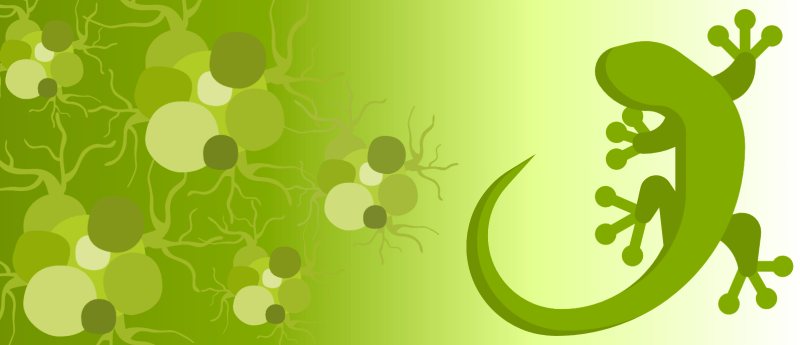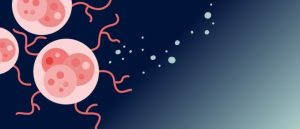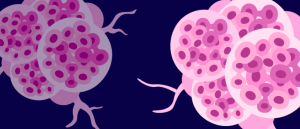Nature knows best: gecko-inspired chemotherapeutic delivery method

Original story from the University of Colorado Boulder (CO, USA).
Gecko-inspired ultra-sticky particles can be loaded with chemotherapy drugs and attached to tumors, minimizing impact to healthy tissue.
For millennia, the gecko has offered inspiration to humans. As far back as the 4th century BCE, Aristotle marveled at the nimble reptile’s ability to ‘run up and down a tree in any way, even with the head downwards’. Its grippy toes, able to latch on to even the slipperiest surface with extraordinary force, have inspired everything from super glues to ‘Superman’ climbing suits to sponges for soaking up environmental toxins.
Now, CU Boulder (CO, USA) scientists have taken a cue from the remarkable reptile to develop a material able to stick to tumors inside the body, pumping out chemotherapy drugs for days. The technology, developed with doctors at the University of Colorado Anschutz Medical Campus (CO, USA), was described in a recent paper.
“Nature has been at this for millions of years and offers clues for developing better biomaterials,” commented senior author Wyatt Shields, Thomas F. Austin assistant professor of Chemical and Biological Engineering at CU Boulder.
First author Jin Gyun Lee, a postdoctoral researcher in the Shields Lab, reported that early results have shown great promise. “We envision that this gecko-inspired technology could ultimately reduce the frequency of clinical treatments, potentially allowing patients to receive fewer but longer-lasting therapies,” Lee shared.
 Novel nanocarrier could transform therapeutic antibody delivery
Novel nanocarrier could transform therapeutic antibody delivery
Researchers create nanomachines using metal and polyphenols, which enhance targeted intracellular delivery of antibodies for cancer therapy.
The power of sticky toes
How does a gecko manage to effortlessly ascend a glass wall or glide across a slippery ceiling?
The secret lies in the millions of microscopic, hair-like fibers – called setae – that line their toes. With each step, these hair-like structures – and thousands of even tinier split ends called spatulae – flatten out across a broad surface area, conforming to a surface’s nooks and crannies.
When molecules on the spatulae and surfaces interact, through a phenomenon known as Van der Waals forces, their feet stick to the surface very hard. However, just a slight movement can break the bond, enabling them to scurry on.
Scientists have tried for decades to replicate the structures of the gecko toe for use in stronger adhesives, medical and personal care products, and more. However, these tiny hairs have proven complicated and expensive to fabricate and almost impossible to make at scale.
Shields, whose lab develops materials for medical applications, faced an additional challenge: He and Lee sought to invent a material that could linger safely in the body, delivering a sustained dose of medicine, before disintegrating.
They developed a way to turn an already FDA-approved biodegradable polymer, poly lactic-co-glycolic acid (PLGA), into small particles displaying branched hair-like nanostructures similar to those on the gecko’s feet.
They loaded these ‘soft dendritic particles’ with chemotherapy drugs and attached them to cancer cells in a petri dish and bladder tumors in mice.
The study showed that the particles clung tightly to the cancer cells for days, even in a slippery environment like the surface of a bladder. The animals tolerated them well and the treatment elicited a favorable immune response. Additionally, the particles were cheap and easy to make.
“We’ve developed a practical, flexible platform for localized cancer therapy that could be easily scaled and translated,” commented Lee.
 A genomic test for predicting chemoresistance
A genomic test for predicting chemoresistance
A genomic test for successfully predicting whether cancer will resist common types of chemotherapy has been developed.
The challenge with bladder cancer
The authors stress that more research is necessary, and it could be years before the technology is ready for clinical trials in people. Ultimately, they believe the technology could be a game changer for treating localized tumors (those still confined to one spot), with minimal damage to healthy surrounding tissue.
The team started with bladder cancer – which is diagnosed in about 85,000 people and kills 18,000 people annually – because it can be uniquely challenging to treat.
“Bladder cancer is common, with most patients presenting with localized disease,” explained co-author Thomas Flaig, an oncologist and professor of medicine at CU Anschutz who specializes in bladder cancer. “There is a real need for new and effective therapies to prevent progression to more advanced disease for these patients.”
To treat localized bladder tumors, doctors typically insert a catheter into the bladder and bathe the whole organ in chemotherapy drugs. Because people urinate about six times a day, the medication washes out fast, necessitating frequent repeat treatments that can be painful. Side effects are common, since the drugs hit the healthy tissue, too. Often, the cancer comes back.
The researchers envision a day when a gel containing their gecko-inspired particles could be applied directly to the tumor, selectively delivering a sustained, high concentration of cancer-killing medicine until it breaks down and is excreted.
The technology could also work for other cancers, such as oral, head or neck tumors.
The team of biomedical and materials engineers, medical oncologists and cancer biologists plan to continue their cross-campus collaboration and to look to nature for inspiration.
“These are early days in this work, but this is a really promising start,” concluded Flaig, also vice chancellor for research for the Anschutz Medical Campus. “Often the scientific projects that bring together those with distinct areas of expertise have the best chance to have the biggest impact.”
This article has been republished from the following materials. Material may have been edited for length and house style. For further information, please contact the cited source. Our press release publishing policy can be accessed here.